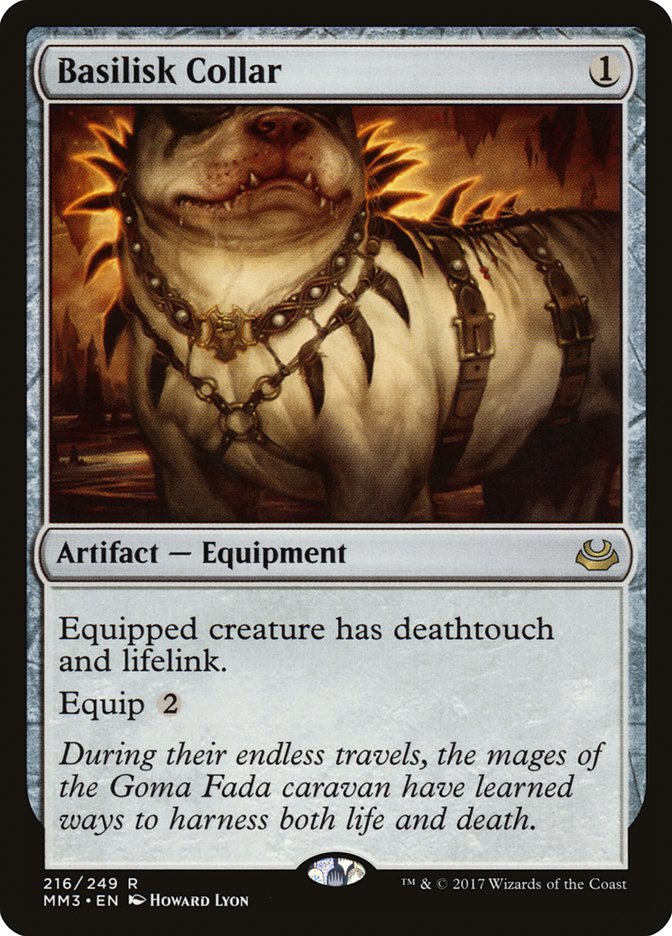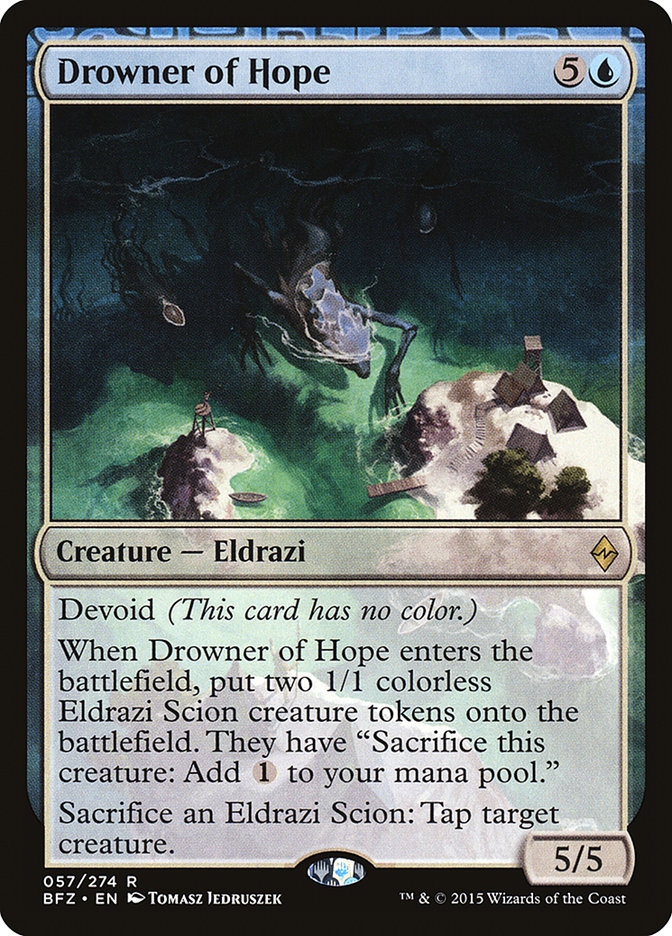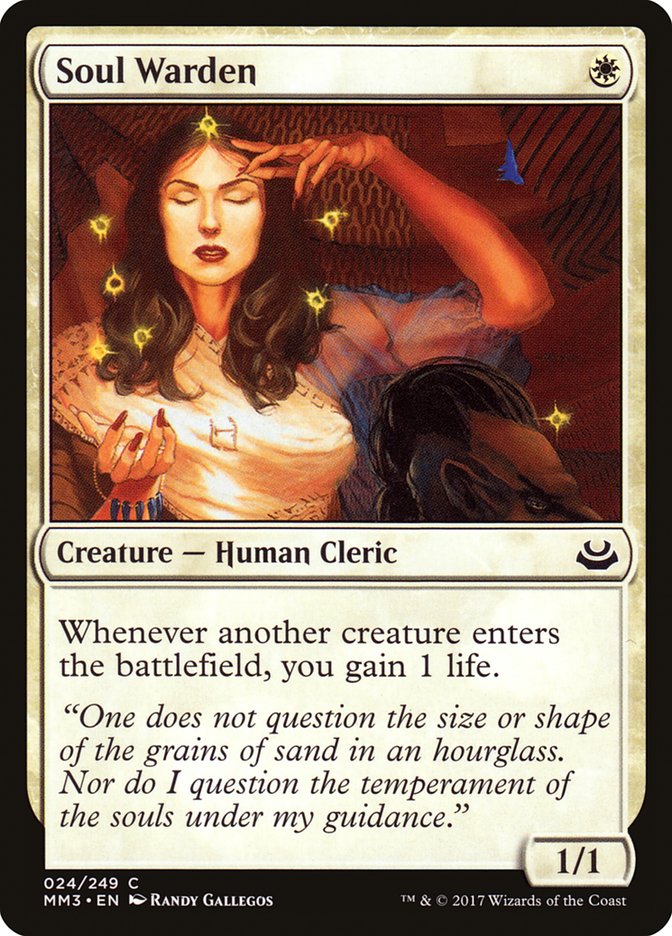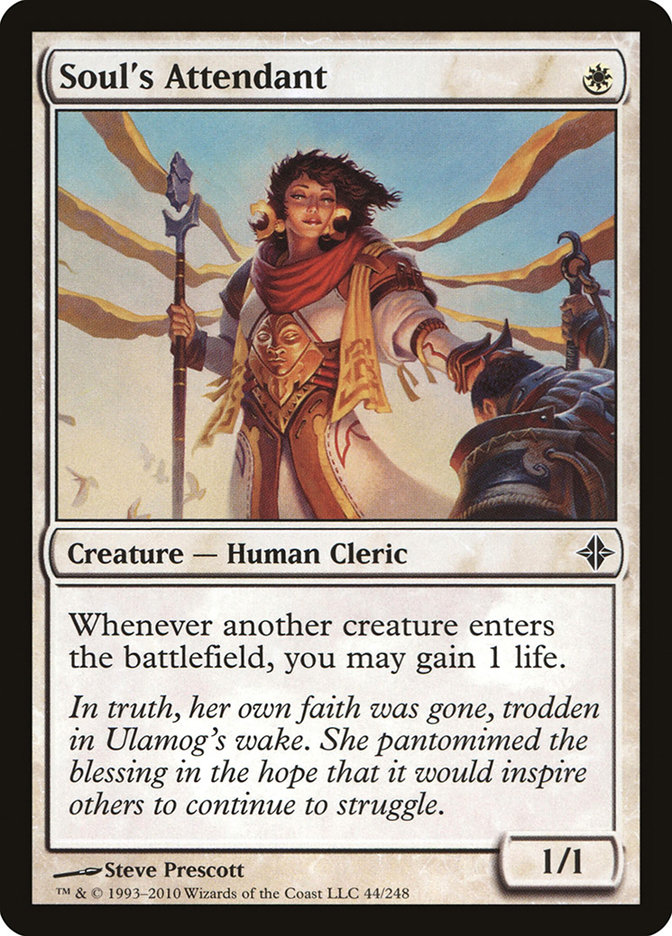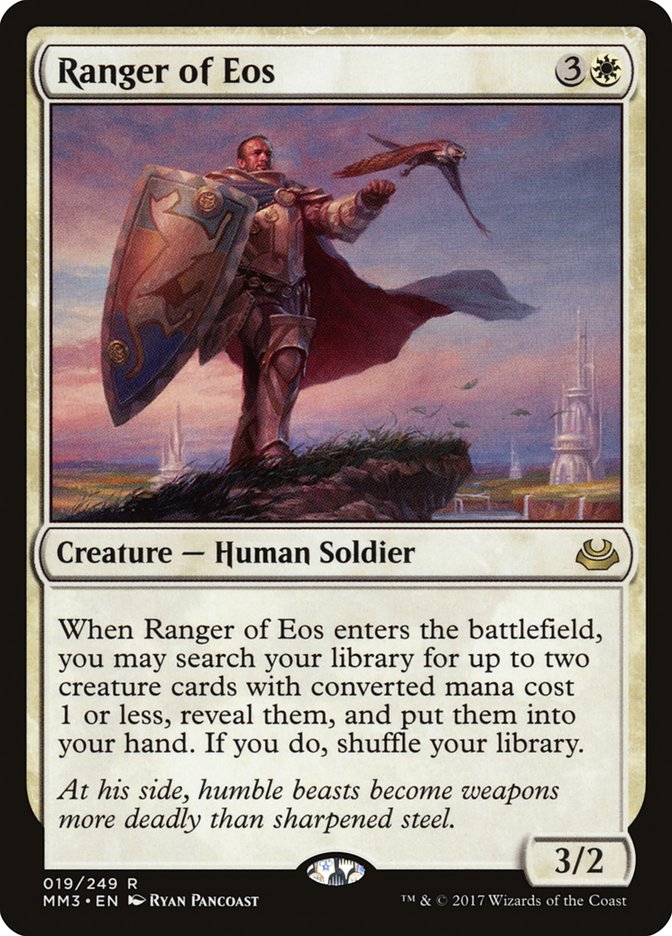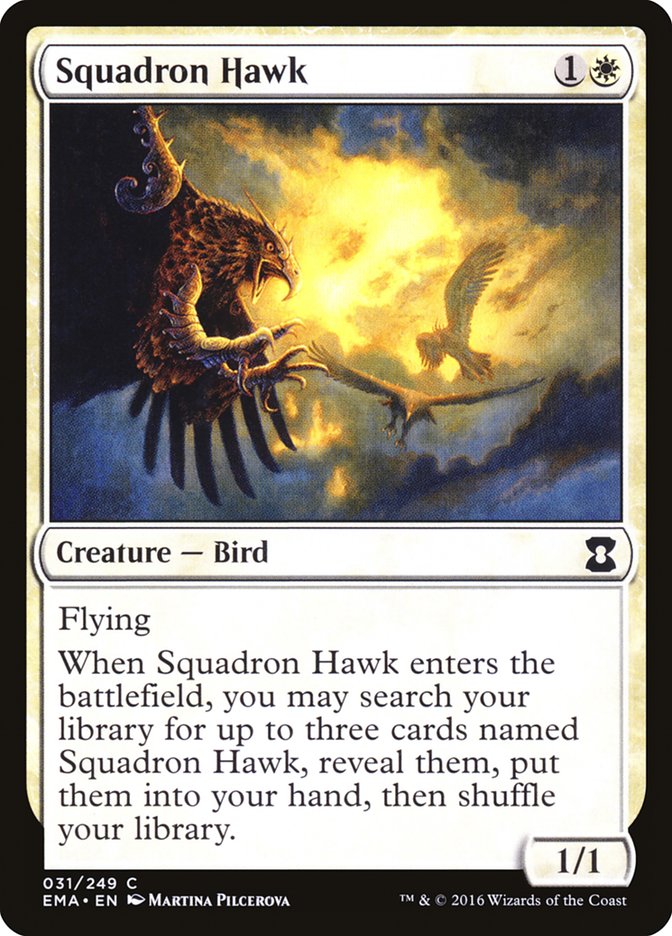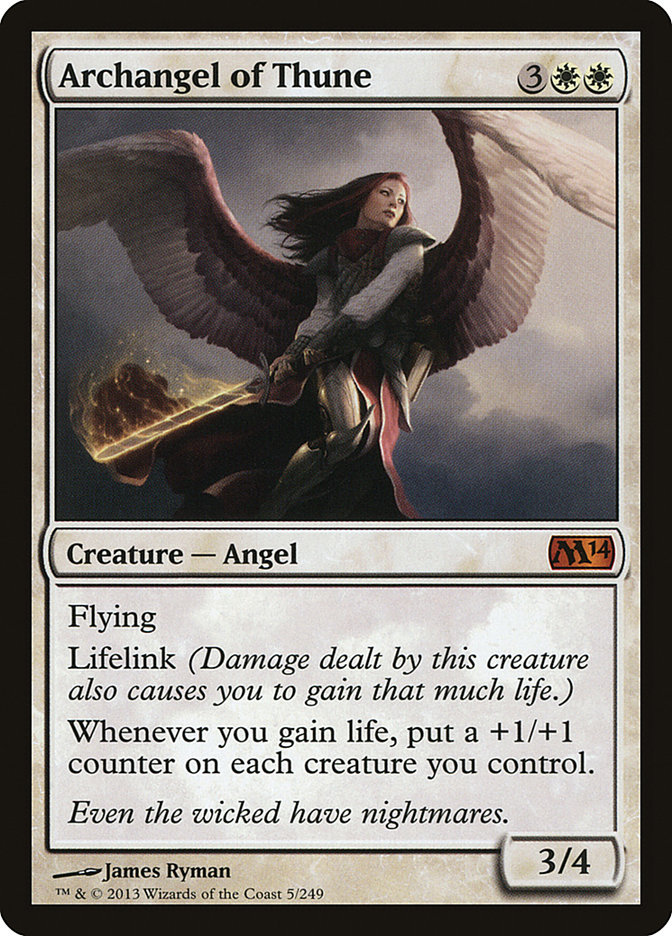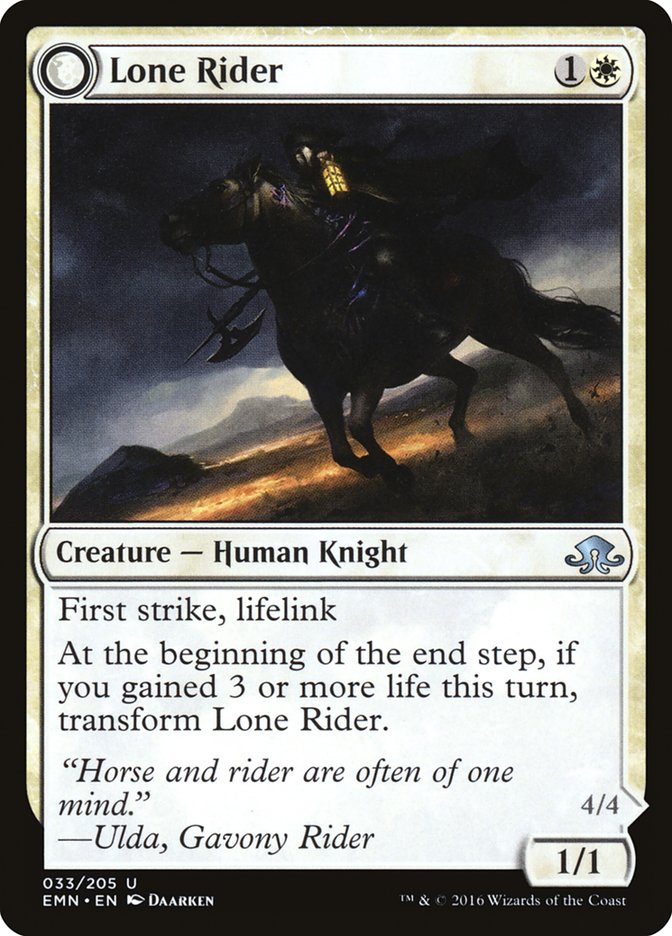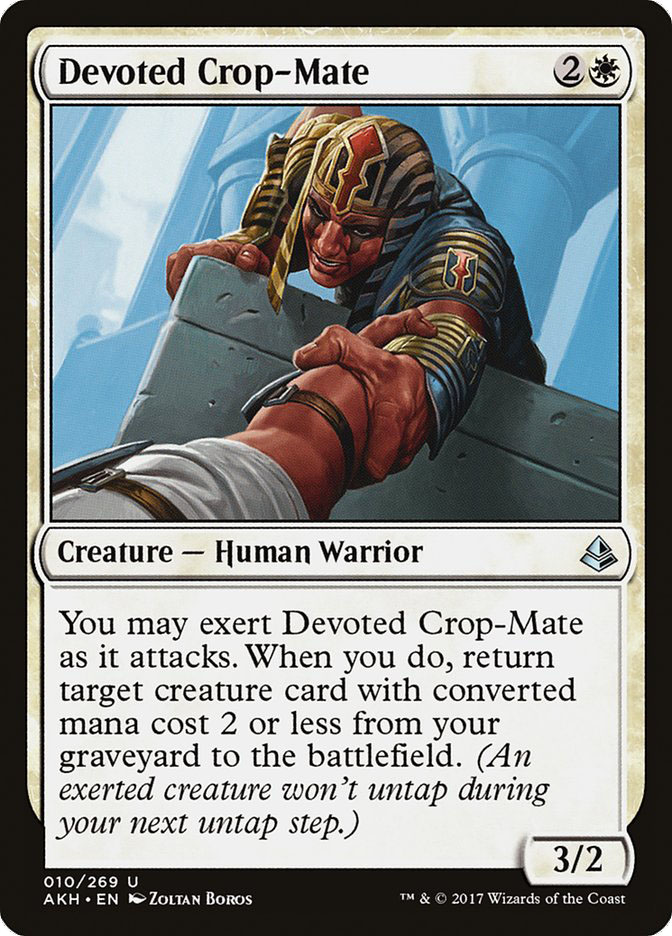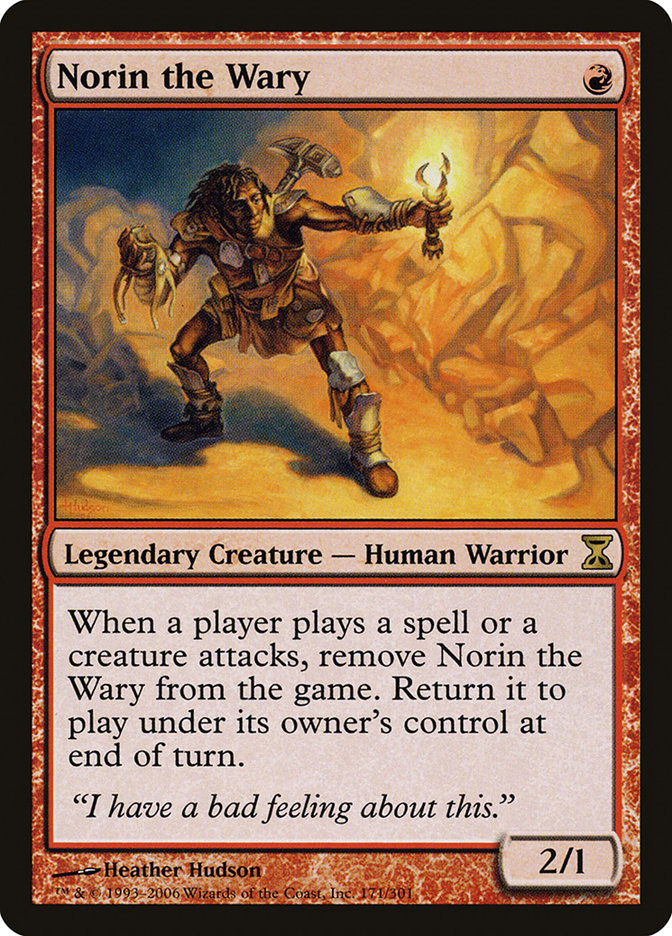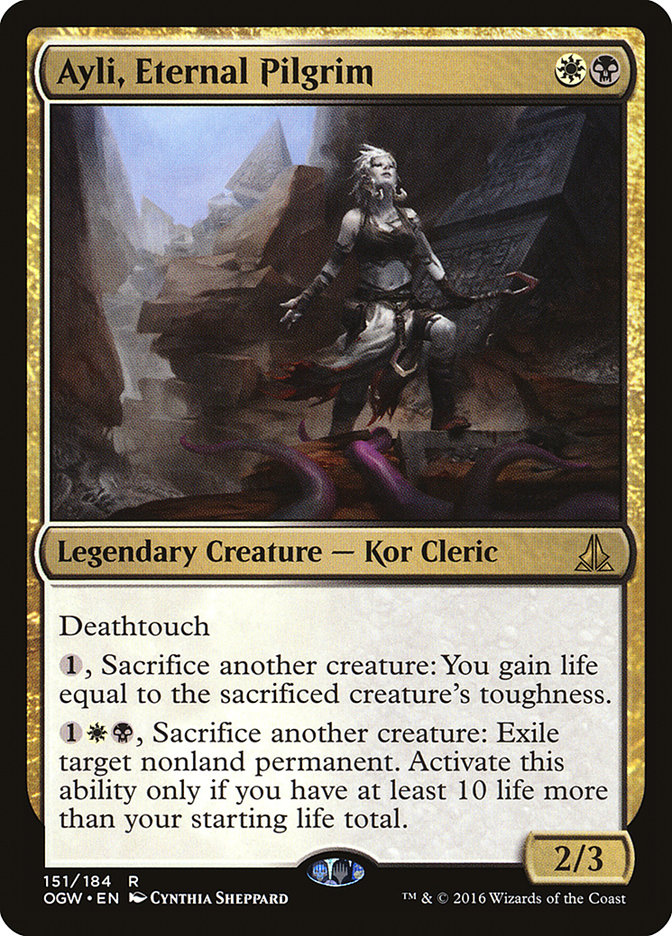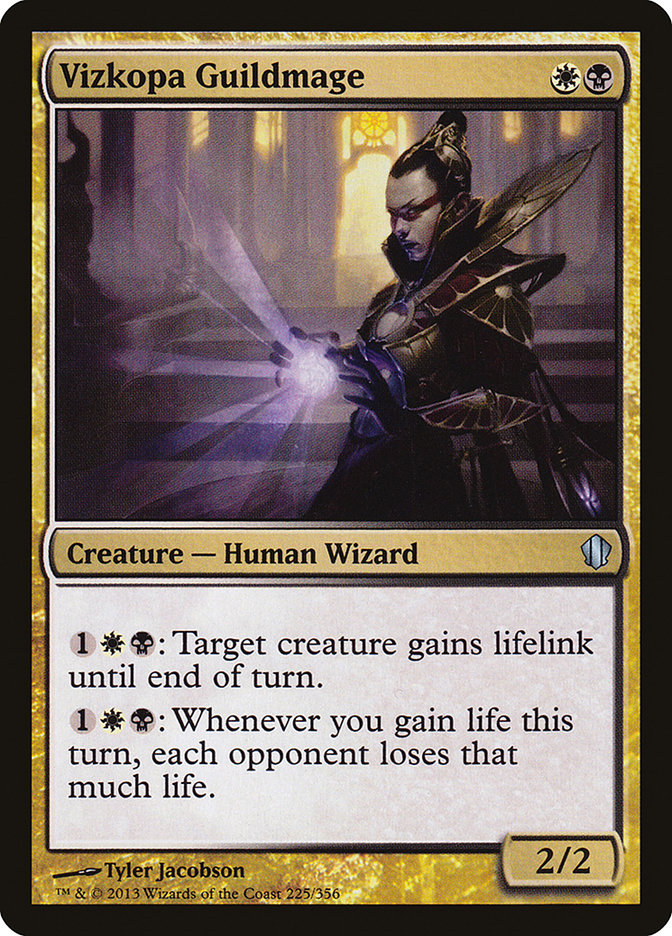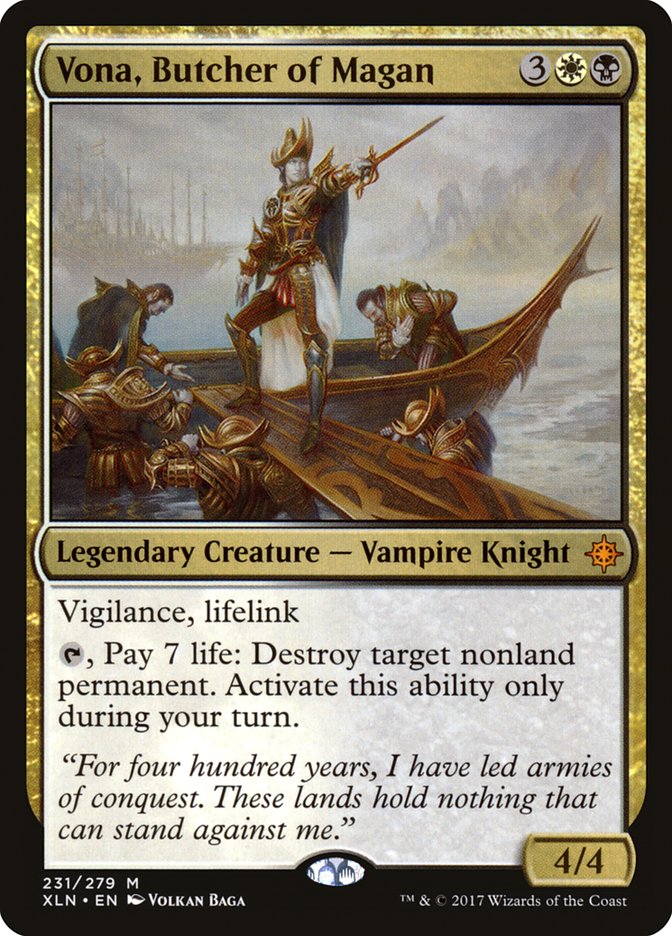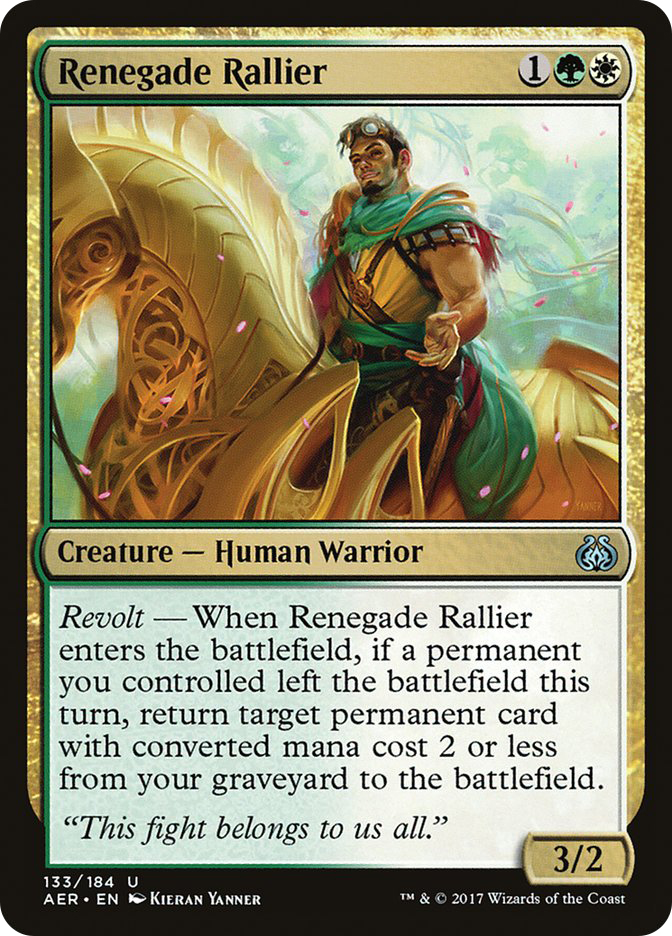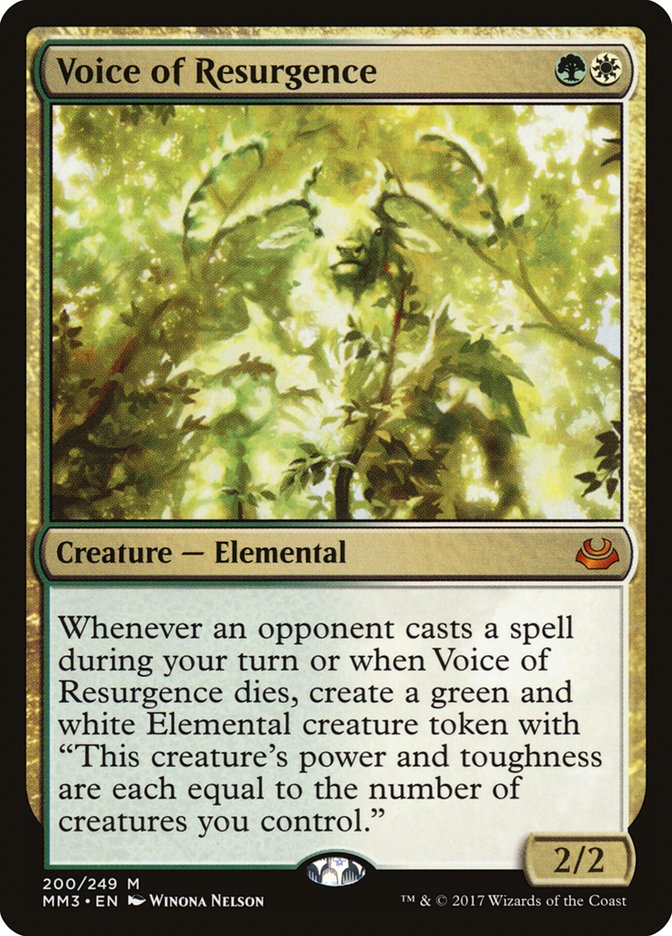One of my favorite things about Modern is the flexibility of the format. TitanShift, Eldrazi Tron, Storm, and Grixis Death’s Shadow are firmly cemented at the top of the tier list, but you can play almost anything. Cards like Phyrexian Unlife, Vizier of Remedies, Rift Bolt, Basilisk Collar, and Drowner of Hope are all key parts of popular decks that you might not expect to see at the top tables of a competitive event.
While it might not be a tier one deck anymore, my old standby and possibly my favorite deck in the format could not content itself with just one such card. Heavens, no. We are pushing the limits of playable, my friends.
Get a Life
Soul Sisters is the kind of deck that can randomly take down larger Modern events just based on the fact that nobody was ready for it. The deck naturally preys on aggressive strategies and has surprisingly consistent sideboarded games with access to the wide variety of hate cards that white can bring to bear.
That’s all well and good, but how do we actually build the deck? If the three cards above are key, what joins them? As it happens, there are multiple answers to these questions, and today’s goal is to lay them out for you.
Mono-White
This is the stock version of the deck, the one that most people will think of when you mention the archetype. That said, there are still several paths to take once we include the core cards. We’re still looking to gain significant amounts of life and use that to both put us out of range of the opponent and trigger a bunch of our synergies.
My personal preference for the way to build this in mono-white is to just go hard on the lifegain:
Creatures (27)
- 4 Soul Warden
- 3 Martyr of Sands
- 2 Ranger of Eos
- 4 Soul's Attendant
- 4 Serra Ascendant
- 4 Ajani's Pridemate
- 4 Squadron Hawk
- 2 Archangel of Thune
Lands (21)
Spells (12)

Martyr of Sands often has its own mono-white deck that plays far more like a control deck than an aggressive one. While most of the creatures in Soul Sisters are small, the deck plays very aggressively even without the Anthem effect of Honor of the Pure. We’re playing it here because Turn 1 Serra Ascendant into Turn 2 Martyr of Sands will almost always have you attacking for six on Turn 2.
Ranger of Eos is one of our only ways to get any card advantage in Game 1. With so many one-mana creatures being important to the deck, we really need the ability to find them at will. The Ranger is also our best recovery from something like Anger of the Gods or Supreme Verdict, both of which are bad news for a deck like this.
Legion’s Landing is our other card advantage engine; in this deck it should be trivial to transform it and really start cranking out Vampire tokens which conveniently also gain us life.
Squadron Hawk has not seen any play in decks that don’t just want to give it a Sword, but Soul Sisters is definitely in the market for the set of skills that the Hawks bring: extra cards in hand, extra creatures to cast, and evasion to get a few points of damage through. Spectral Possession plays a similar role, though its real power is in getting three bodies from one card.
Both Ajani’s Pridemate and Archangel of Thune really appreciate the individual lifegain occurrences that this deck causes. Although the Pridemate is very easy to chump block, it’s an important card because it does require an answer on every turn of the game. On the other hand, Archangel of Thune will often win the game when it resolves and you have any sort of presence whatsoever.
Another mono-white option goes even more aggressive, almost playing a tribal element:
Creatures (34)
- 4 Soul Warden
- 3 Auriok Champion
- 2 Ranger of Eos
- 4 Soul's Attendant
- 4 Serra Ascendant
- 4 Ajani's Pridemate
- 4 Champion of the Parish
- 4 Thalia's Lieutenant
- 4 Lone Rider
- 1 Devoted Crop-Mate
Lands (22)
Spells (4)

As all of the Soul Sisters (even Auriok Champion) are Humans, there is a natural synergy with both Champion of the Parish and Thalia’s Lieutenant. Without the ability to refill our hand with Squadron Hawk, Martyr of Sands feels a lot worse in the deck and is replaced by Lone Rider. Gaining three life in a turn is trivial, and the transformed Lone Rider is a very powerful card. If we were able to get any counters on it before it transforms, it’s even better.
Devoted Crop-Mate is a speculative inclusion that I really like in a deck with so many small creatures with enters-the-battlefield effects. We may not get to do it every turn, but we shouldn’t need to very often. We also get to play Auriok Champion in the maindeck, which excites me greatly.
The sideboard sees us with a couple of new additions in Brave the Elements and Eerie Interlude. Both cards serve as ways to protect against things like Anger of the Gods or Pyroclasm, but both have additional synergies. Brave the Elements can finish the game by letting us crash through blockers with little to no regard for their presence, while Eerie Interlude not only retriggers all our enters-the-battlefield effects (which gets silly with multiple Thalia’s Lieutenant) but also lets us dodge Wrath of God, Supreme Verdict, and any other non-damage-based sweeper.
Seeing Red
So you’re feeling a little Chaotic Good and want to add red to your deck? Well that should perhaps make you a little Wary…
Creatures (29)
- 4 Soul Warden
- 3 Norin the Wary
- 3 Ranger of Eos
- 4 Soul's Attendant
- 3 Ajani's Pridemate
- 2 Mentor of the Meek
- 4 Champion of the Parish
- 2 Legion Loyalist
- 2 Archangel of Thune
- 2 Thalia's Lieutenant
Lands (22)
Spells (9)
Sideboard

The plan here is slightly different from the typical Soul Sisters plan. Although we are still looking to gain buckets of life from our Sisters, this is more of a combo deck thanks to the addition of Genesis Chamber and perennial joke card Norin the Wary. I have a special affection for this particular version of the archetype because it combines my love of lifegain with my love of combo.
Norin the Wary is not a good Magiccard. Don’t be under any illusions there. In this deck, though, it is the playing card in the spokes of the wheel that makes everything hum. Every time anyone casts a spell or attacks, Norin gets exiled, only to return in the end step. Of course, when he returns, he triggers all our Sisters, Champion of the Parish, and Thalia’s Lieutenant. The biggest factor is that he also triggers Genesis Chamber, which once again gains us life. The Chamber is symmetrical, so our opponent also gets to enjoy the Myr tokens from their creatures, but they aren’t gaining life in the process. Not only are we getting life from our tokens, we gain it from theirs, too.
We also have a backup plan that they probably don’t, or at least shouldn’t: Legion Loyalist. Not only does the Loyalist give our giant creatures (Ajani’s Pridemate, Champion of the Parish, and Thalia’s Lieutenant can all grow to ridiculous size in this deck) trample, it also prevents them from just chump blocking with their Myr tokens.
Similarly, Impact Tremors is not a good card. This spot used to belong to Purphoros, God of the Forge, but four mana is a lot to ask sometimes. It’s here purely to kill the opponent through a battlefield stall, which unfortunately will happen when you can’t find a Legion Loyalist. It’s not uncommon to just attack with Norin the Wary solely to make tokens with Genesis Chamber and hit the opponent with your Impact Tremors.
Finally, Mentor of the Meek is your card-draw engine. Late in the game, you will often find yourself with a bunch of untapped mana, as all your spells are cheap, and Mentor lets you turn the creatures you draw into cantrips. Best of all, it triggers from the Myr tokens from Genesis Chamber and from Norin returning to the battlefield, letting you draw cards even if you have stalled out on things to cast.
Our sideboard is pretty much a Blood Moon plan with some extra utility cards. We’re playing red, so we might as well play the most hateful card in the format, right?
Paint It Black
The black version of this deck is in kind of a different spot and has a few different options. We not only get the card advantage options that black provides, we also get access to Fatal Push and Orzhov Charm if we want them. There are a couple of different ways to go about this, but this is the version I enjoy:
Creatures (27)
- 4 Soul Warden
- 3 Dark Confidant
- 4 Soul's Attendant
- 4 Ajani's Pridemate
- 4 Champion of the Parish
- 2 Archangel of Thune
- 2 Ayli, Eternal Pilgrim
- 2 Thalia's Lieutenant
- 2 Kitesail Freebooter
Lands (23)
Spells (9)

After sideboarding we get the option to make this deck into a grindier one that plays more removal and some light discard at the expense of some of our lifegain options. Dark Confidant is a huge maindeck incentive to play this deck, putting all that life to good use and allowing us to rip through our library at great speed. With a fair few five-drops in the sideboard, it’s probably not a bad idea to sideboard out the Dark Confidants if we need the extra beef.
Ayli, Eternal Pilgrim is a huge draw to black. This deck can very easily get to the point where her Vindicate ability is active, and sacrificing a huge Pridemate that is about to meet an Abrupt Decay is just always a great feeling. It’s unfortunate that she is not a Human, but we are welcoming of all races here.
Lingering Souls is of course a very strong card that is not in any way made worse by the shell of this deck. We might have to invest more than with Spectral Procession, but the mana requirement is much easier and we get an extra body. When we are looking to gain life per creature, that’s an even bigger bonus.
The sideboard is where we get a lot of interesting options. Vizkopa Guildmage is a card I have toyed with several times. As a Human it plays nicely with the rest of the deck, and it plays even more nicely with Sorin, Lord of Innistrad and his first ability. The activation of that ability is not cheap, however, and it is possible that this should just be Immortal Servitude. Where I am more certain is with Blood Baron of Vizkopa and Vona, Butcher of Magan, which both get near-unbeatable in the right scenario. The Blood Baron in particular is very good against Death’s Shadow decks, and Vona can just go to work against decks relying on Fatal Push and Abrupt Decay for removal.
Green with Envy
Green provides us with a bunch of fun additions and lets us go even deeper on the Sisters with Essence Warden.
Creatures (32)
- 4 Soul Warden
- 4 Essence Warden
- 4 Soul's Attendant
- 4 Serra Ascendant
- 4 Ajani's Pridemate
- 2 Scavenging Ooze
- 4 Voice of Resurgence
- 2 Archangel of Thune
- 2 Renegade Rallier
- 2 Rhonas the Indomitable
Lands (22)
Spells (6)

This is very much a speculative build and one I have yet to try. Essence Warden lets us eschew Auriok Champion for additional Turn 1 lifegain options, and Gavony Township really helps our late-game. With the lack of Human synergies, we have dropped that package in favor of more utility, made even more effective by the addition of Collected Company. Having said that, I am not sure we have effective enough hits for Company, as hitting two Sisters will often feel awful. Time will tell.
The color combination does give us access to some excellent gold cards in Renegade Rallier and Voice of Resurgence, as well as Chord of Calling as a strict upgrade to Ranger of Eos. Fetching up an Archangel of Thune mid-combat could just end the game on the spot. Renegade Rallier has proven its power in the format already, and in this deck it gets to return Serra Ascendant, which can’t be bad. We also get access to Rhonas the Indomitable, which not only forces through a giant Ajani’s Pridemate but will probably be able to attack himself quite often.
If we wanted to stay with the Human subtheme, we do get Mayor of Avabruck and Hamlet Captain to add to the above mono-white list:
Creatures (34)
- 4 Soul Warden
- 2 Auriok Champion
- 3 Noble Hierarch
- 3 Soul's Attendant
- 4 Serra Ascendant
- 4 Champion of the Parish
- 2 Hamlet Captain
- 4 Mayor of Avabruck
- 2 Serene Steward
- 4 Thalia's Lieutenant
- 2 Renegade Rallier
Lands (22)
Spells (4)

Pretty straightforward gameplan here, once again taking advantage of the fact that we have access to Collected Company. As we said earlier, hitting two Thalia’s Lieutenants at once is a very powerful effect, and Collected Company helps us there. Of all the decks listed, this one feels like it can make the most of the 1/1 army, and that is a big deal. Not many decks can race this, I feel.
What, No Blue?!
I have yet to find a reason to play W/U Soul Sisters. Blue decks just do not want to play out a lot of cheap creatures, and they rarely care about life. I am hopeful that this will change at some point, but unless we get a significant change in blue’s philosophy, it seems unlikely.
That’s all we have for this week, folks. As always, thanks for stopping by, and until next time…Brew On!



